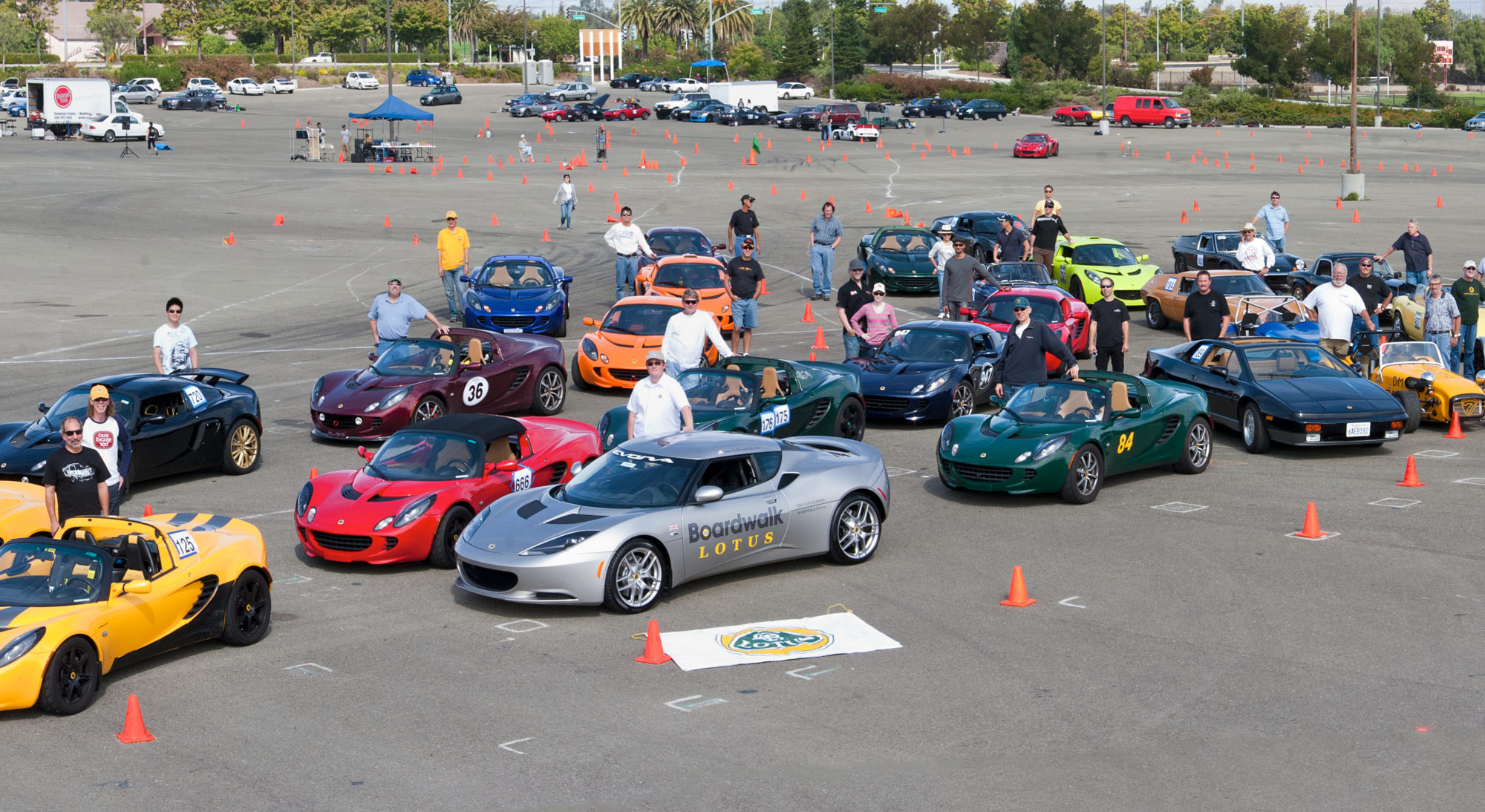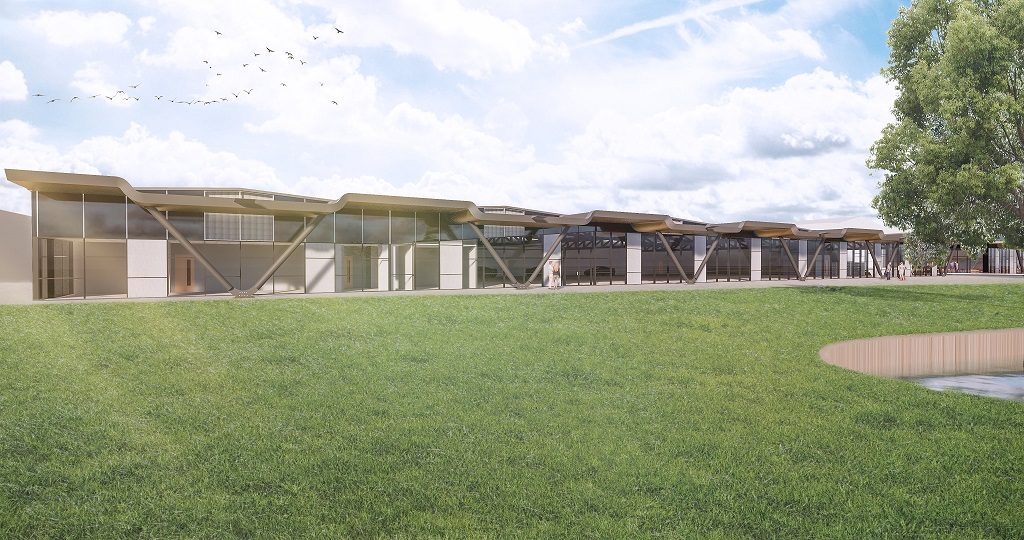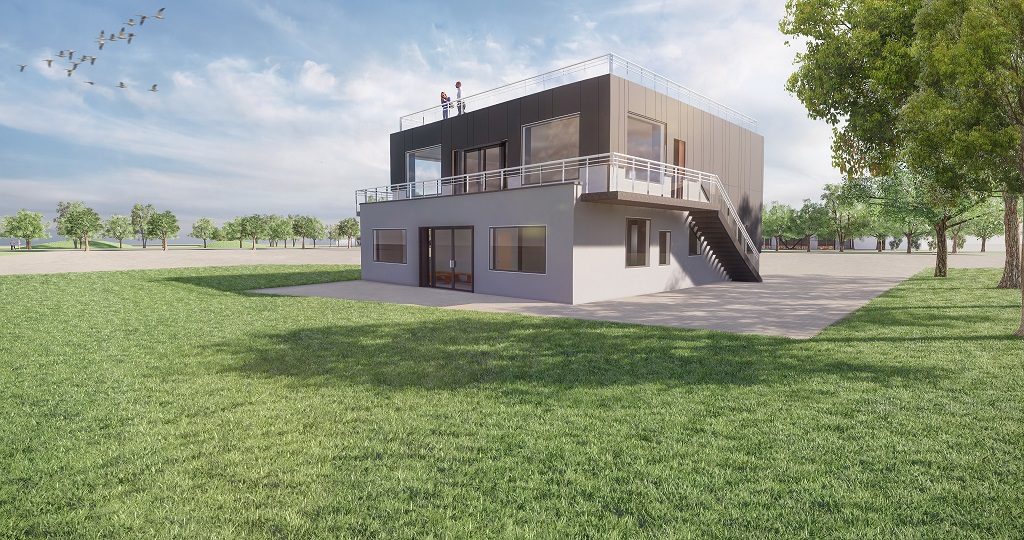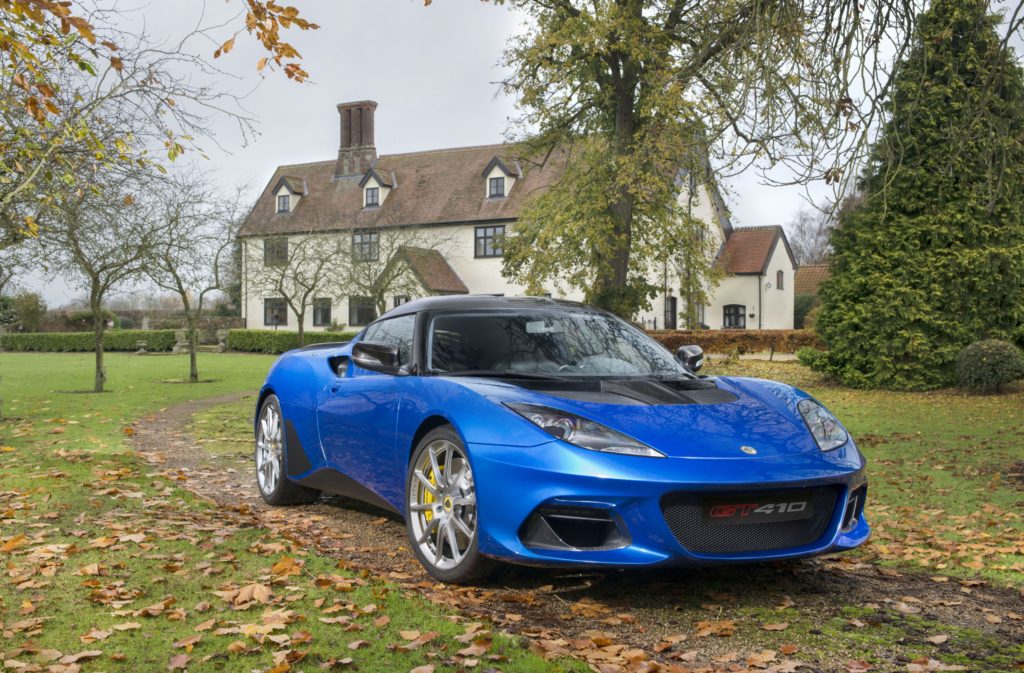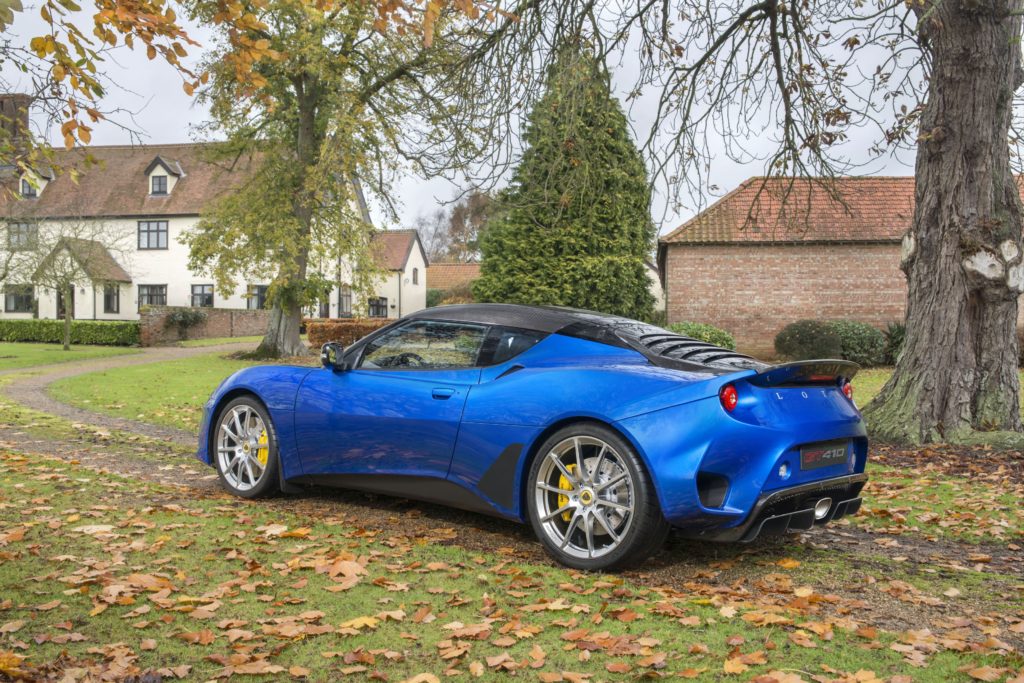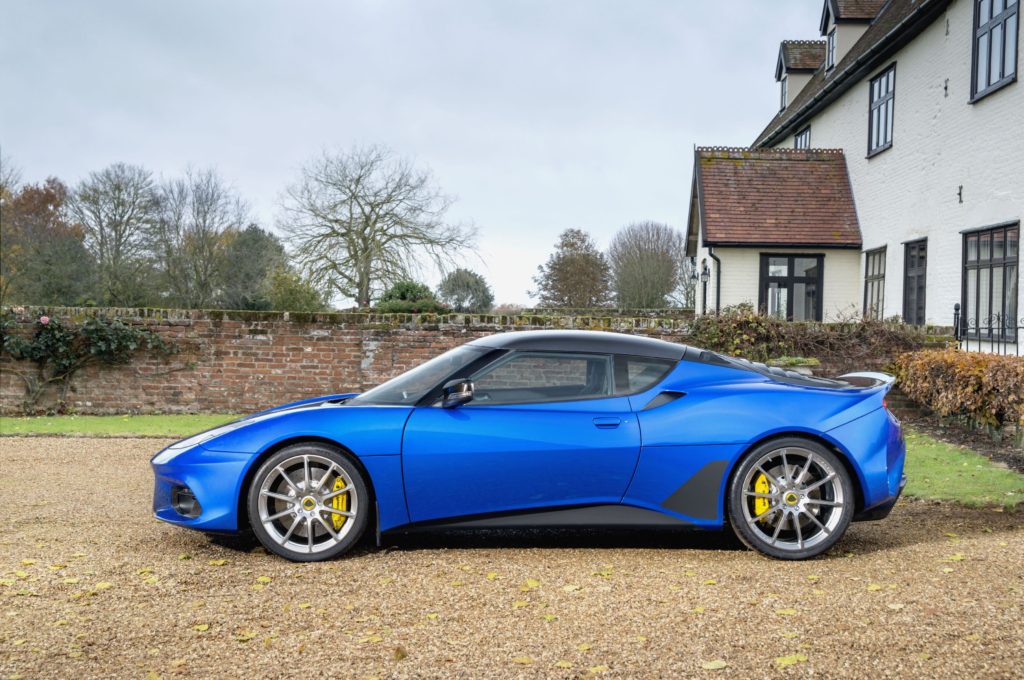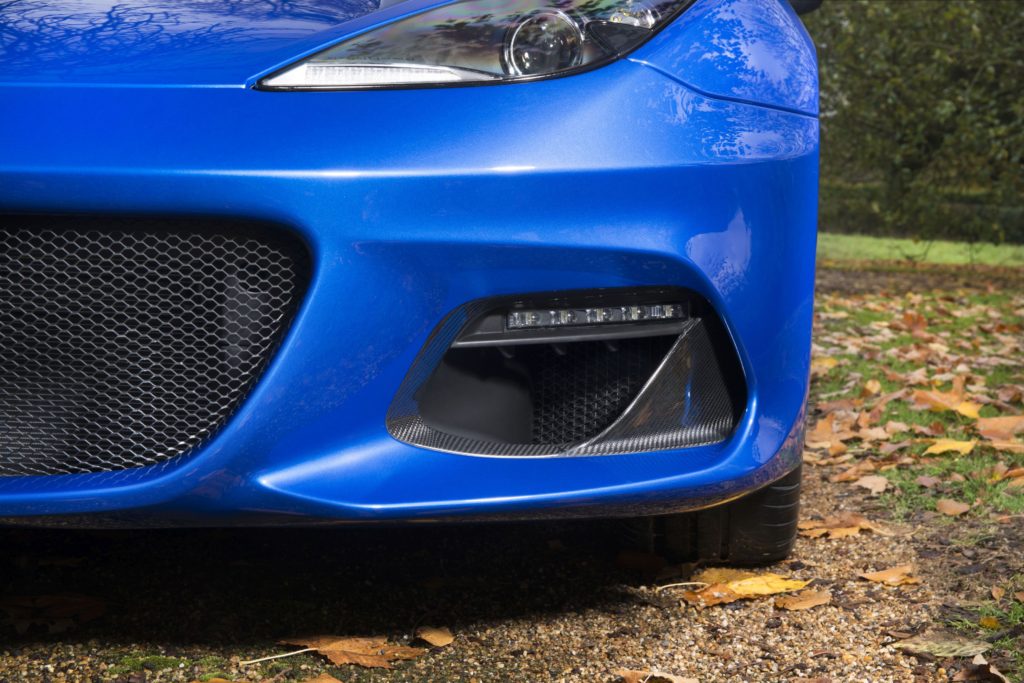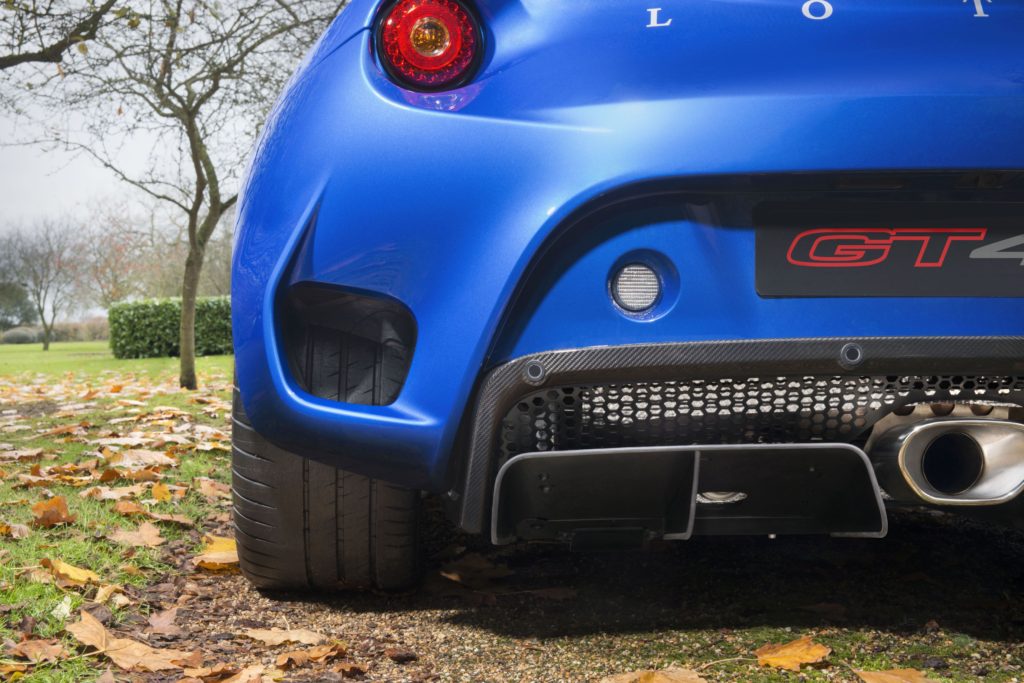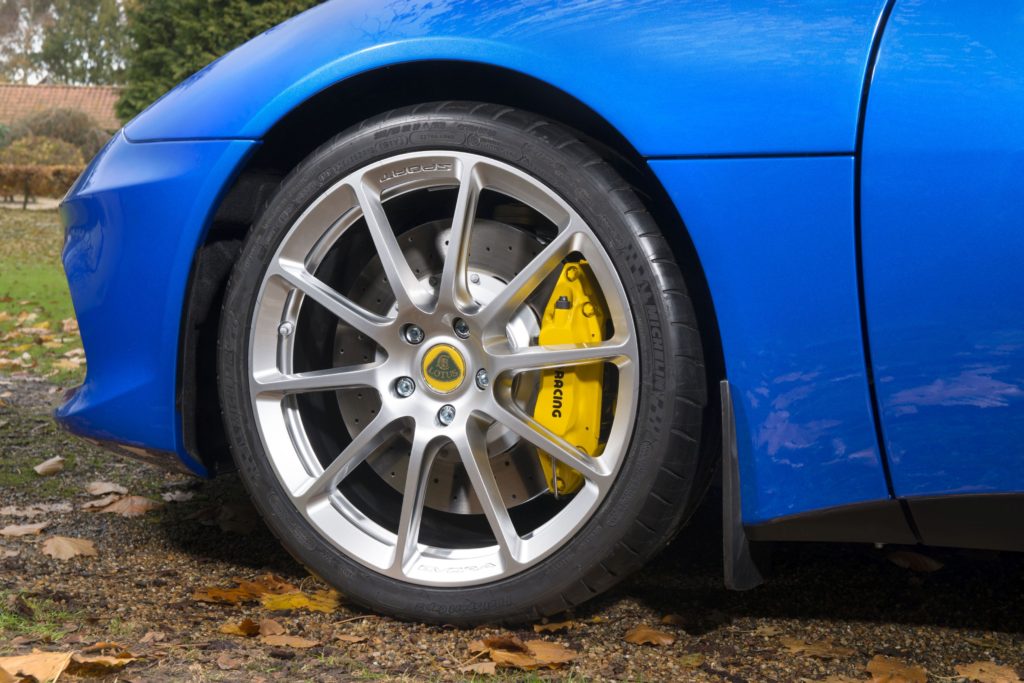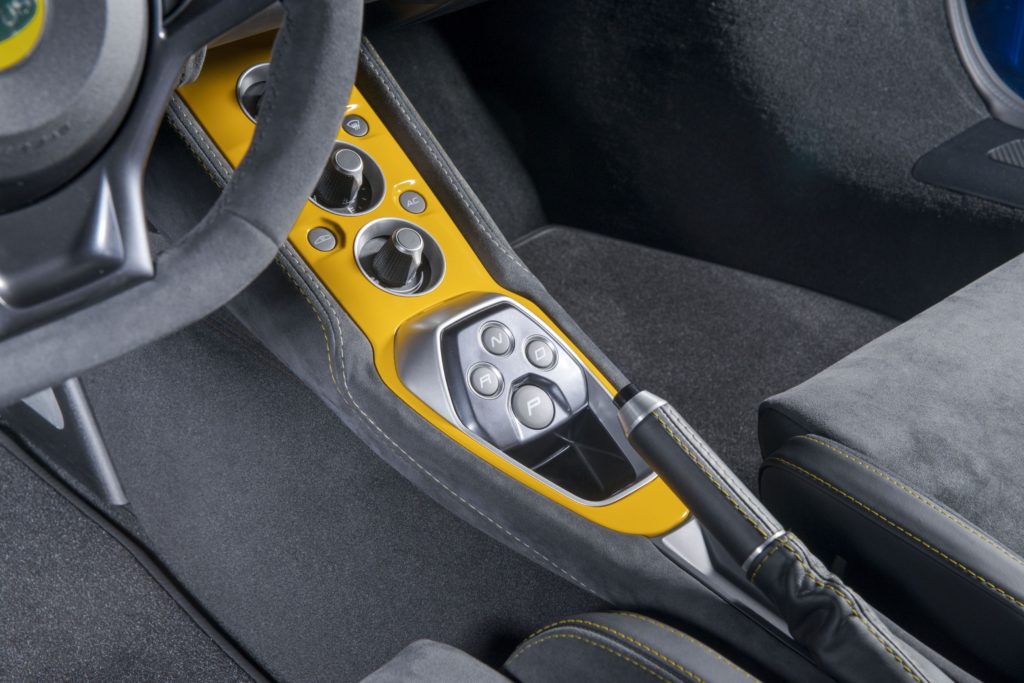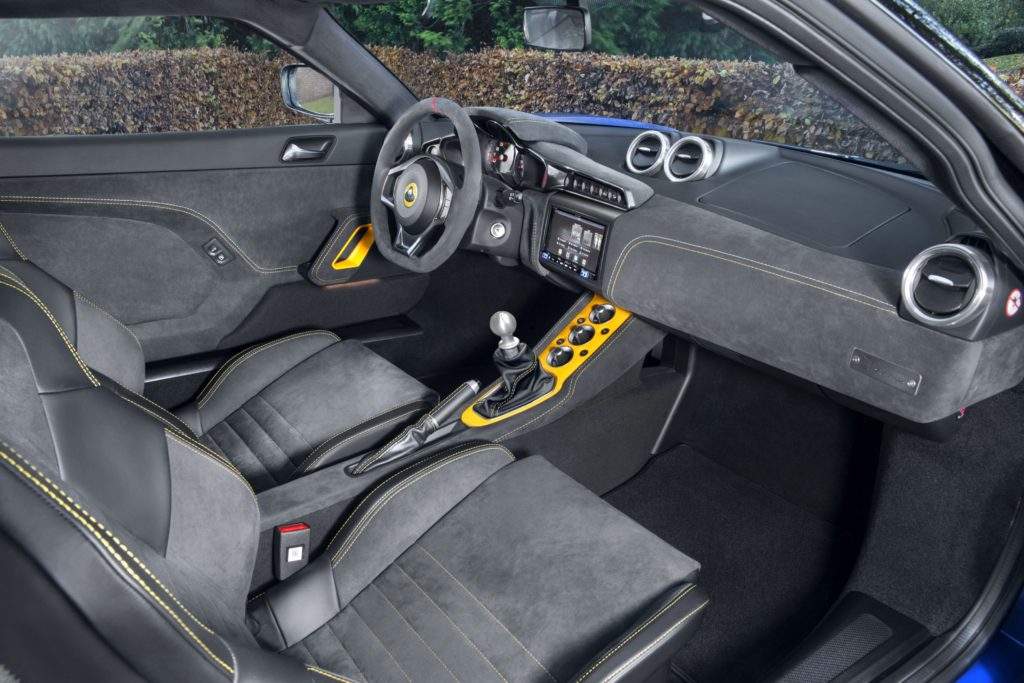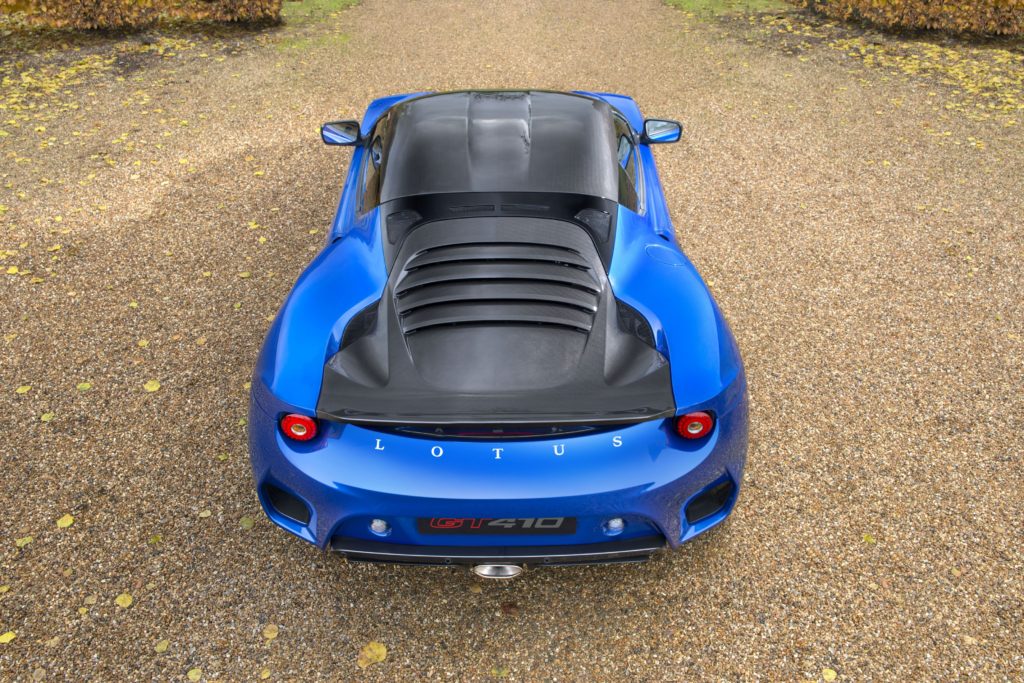Early Emira reviews are in – we have a winner
Elise, Exige and Evora production has ended
(Hethel, UK – 22 December 2021) Today, Lotus commemorates the last of the Elise, Exige and Evora sports cars.
The trio were photographed on site with many of the Lotus team who contributed to the design, engineering, assembly and sales of the cars.
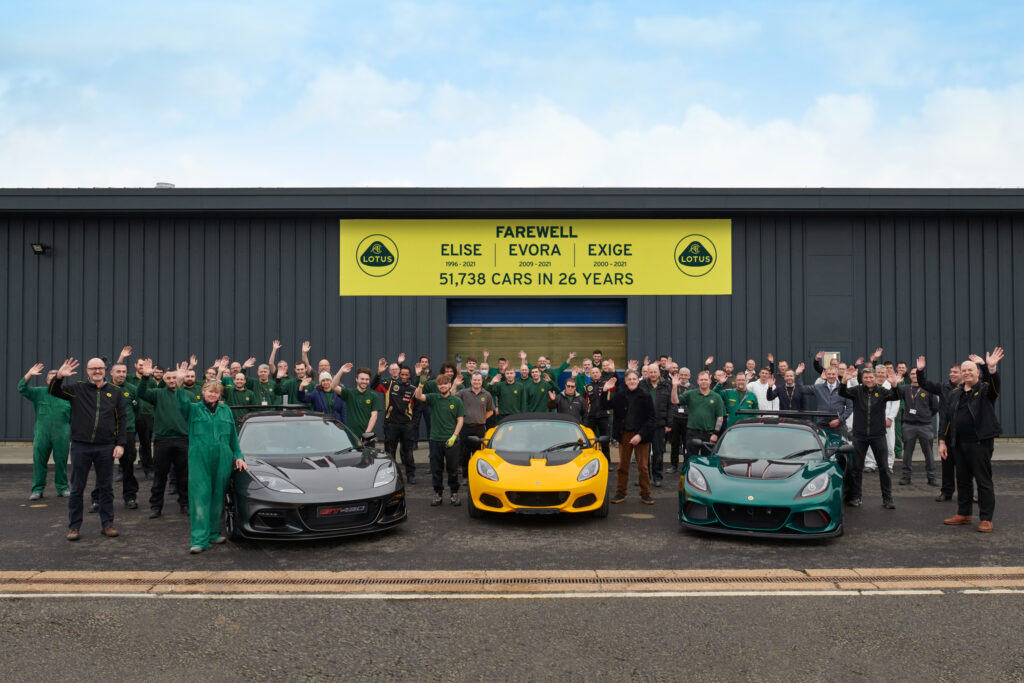
Between these three model lines and over the course of 26 years, a total of 51,738 cars will have come off the production line. Combined, they represent almost half of the total production of Lotus in its 73-year history. In addition, 9,715 sports cars were built for Lotus’ third-party clients, including GM and Tesla.
From 1996 to 2000, the first-generation Elise and Exige sports cars were built in a small assembly hall at Hethel alongside the Lotus Esprit. The current assembly lines, which were installed in 2000, will be dismantled and replaced with all-new state-of-the-art facilities in support of the all-new Emira factory. Full Emira production begins in the spring, after the prototype and test phases currently underway are completed, taking Lotus sports car production into an exciting, high-tech and semi-automated era, and increasing capacity up to 5,000 units per year on a single shift pattern.
The last examples of the Elise, Exige and Evora models are reserved for Lotus’ growing heritage collection.
Joining the collection will be the last Elise, a Sport 240 Final Edition finished in Yellow and the last of 35,124 cars; the last Exige, a Cup 430 Final Edition in Heritage Racing Green – number 10,497; and the last Evora – a GT430 Sport finished in Dark Metallic Grey – the last of a production run of 6,117.
The Elise and Exige sports cars are built around the Lotus ‘small car platform’. On the same platform, and also manufactured by Lotus at Hethel were the Opel Speedster / Vauxhall VX220 (7,200 cars built between 2000 and 2005) and the Tesla Roadster (2,515 cars built between 2007 and 2012). Therefore, including the Lotus 340R, Europa, 2-Eleven and 3-Eleven cars, this brings the total Lotus small car platform production volumes to 56,618 cars.
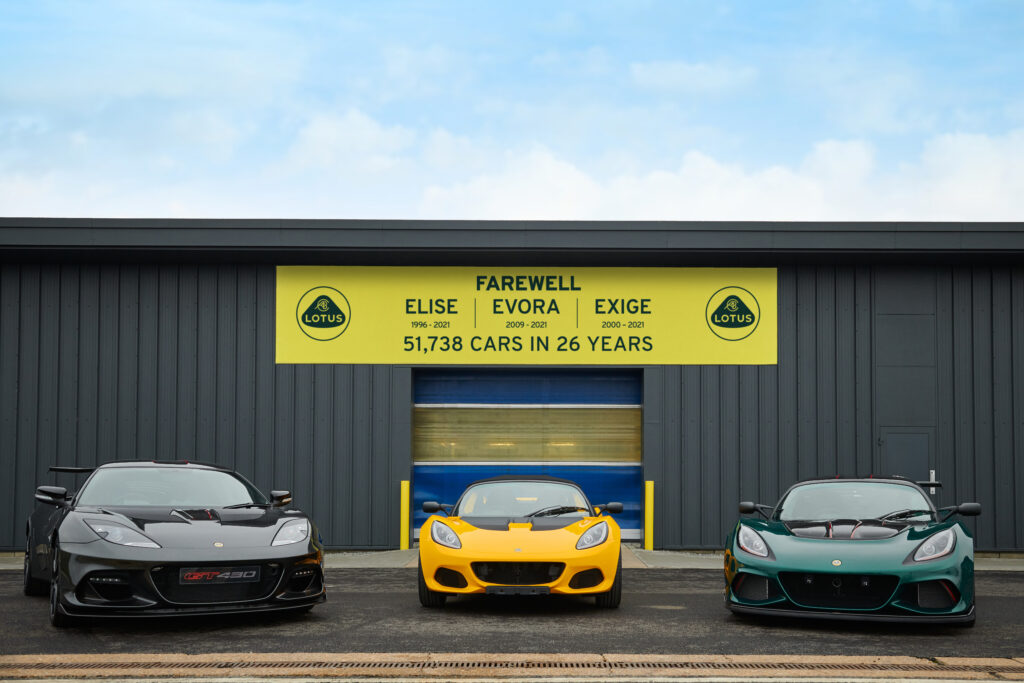
Matt Windle, Managing Director, Lotus Cars, said: “First of all, I would like to thank the Lotus team who have worked on the Elise, Exige and Evora over the years and who are now transferring to Emira and Evija manufacturing. I would also like to convey enormous gratitude to all the customers of the Elise, Exige and Evora over the last 26 years for their passion, enthusiasm and support. These customers have given our ‘three Es’ true cult status – usually reserved for long-out-of-production classics. As we say farewell to the last few cars, we look forward to the Emira and Evija in the all-new factories at Hethel and sub-assembly facilities in Norwich, which introduce greater efficiencies and automation, higher quality and flexibility and the hugely exciting next chapter in our Vision80 strategy.”
Russell Carr, Design Director, Lotus Cars, added: “These iconic cars have not only played a huge role in Lotus’ 73-year history but have also been ever-present in my daily life. Together with the Lotus design team, I have lived and breathed these cars for over 26 years. We will miss them, but a bit like Christmas, once it’s over, the excitement for the next one starts to build – and that’s what’s happening now at Lotus with the Evija, Emira and forthcoming Type 132. 2022 is going to be a great year as a new Lotus generation swings into action.”
Gavan Kershaw, Director of Vehicle Attributes, said: “The Elise, particularly, has been a huge part of my life. It was conceived when I had just finished my apprenticeship and I was working in the vehicle workshops helping to build early prototypes. The Exige will always remain close to me, as the development programme was the first that I worked on as an engineer and I also won the British GT3 championship in a race version. The Evora is also hugely important as it showed that you can have high performance and award-winning handling without sacrificing the longer-journey GT ability. I have first-hand experience of this as I won the British GT4 championships in one and I will never forget leading the technical programme for our Evora Le Mans campaign where we achieved a podium.”
Richard Rackham, Head of Vehicle Concepts, who was vehicle architect on the Lotus Elise and part of the team that pioneered extruded and bonded aluminium technology in the automotive industry, said: “The impact of these three cars has been spectacular over the years, technically, structurally and dynamically. But all technologies and innovations move on and, if you had asked me of my proudest moment four years ago, I would have, without hesitation, said the Elise chassis. However, this has been usurped by our new Project LEVA architecture for our new range of electric sports cars, starting with the Type 135 in a few years’ time. This is now the zenith of Lotus architectures as it has moved the technology game so much further. There is a lot to look forward to.”
Next out of the Lotus stable is the Emira, the critically acclaimed new mid-engineered sports car from Lotus. Launched last July at Hethel and on a world tour ever since, it’s the last petrol-powered car from Lotus. Joining the first electric Lotus – the Evija hypercar and the most powerful production car in the world – will be the all-electric Type 132, Lotus’ first SUV, which will be revealed to the world in the spring.
Radford 62-2 Launch @ The Quail
Lotus Emira Launch @ The Quail
Lotus Evija Video Walkthrough
Matt Windle, Executive Director of Sports Car Engineering, Lotus Cars gives us a video walkaround of the new Lotus Evija at its public launch at the Quail.
Lotus Evija debuts at Monterey Car Week
Lotus Evija, the world’s most powerful production car, made its public debut in Monterey this week as thousands of fans flocked to the electric hypercar’s reveal. North America’s excited reception of the first all-electric British hypercar, resulted in strong double-figure orders being taken, and most of the initial production for the US market now allocated to customers
The all-new Lotus Evija hypercar has made its public debut at the world-renowned Monterey Car Week, which drew to a close at the Pebble Beach Concours d’Elegance on Sunday.
Evija received plaudits from across the automotive world at Car Week, from the likes of high profile collector Jay Leno, social media star Supercar Blondie and the Petersen Automotive Museum Checkered Flag 200, gaining many new fans, friends and customers along the way.
Gordon McCall, Director of Motorsports for The Quail, A Motorsports Gathering, said: “Seeing the Lotus Evija debut at The Quail was fantastic – the brand has an amazing history and it is exciting to see its future unfold with the first of its new sports cars.”
Lotus Cars’ CEO, Phil Popham, added: “This is exactly the start we hoped for. Evija is an outstanding and exceptional car – designed and engineered to put Lotus back on the map as the innovator and technical leader that it is. Many orders are now taken, giving us great confidence to hit our planned volume as we enter production next year.”
A technical tour de force, the Evija is illustrative of the innovative thinking and ingenuity that has always been part of the Lotus DNA. With a target output of 2000 PS, it is the world’s most powerful series production road car. It has been designed and engineered in the UK, and will be produced at Hethel, UK, the home of Lotus since 1966. Exclusivity is guaranteed, with production limited to a maximum of 130 cars.
Merry Christmas
Major upgrades coming to Hethel
Home to Lotus for over 50 years, development ensures Hethel remains the heart of Lotus. As the company prepares for the culmination of its 70th celebrations, Lotus has unveiled the latest stage in its investment plan, which will see the 100 acre site undergo extensive development and renovation work.
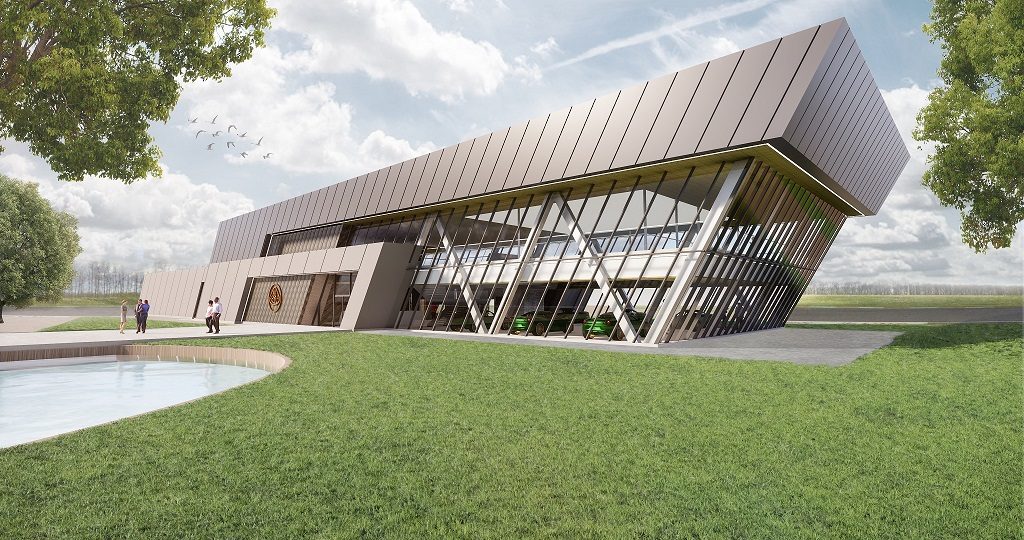
With a new Customer Experience Centre, Heritage Centre and Museum designed by architects Feilden+Mawson and submitted for planning, the British marque has outlined a bold vision for its future at the famous Hethel facility, its home for over 50 years. The plans were unveiled just ahead of the company’s 70th celebrations in Norfolk, marking the anniversary of the founding of Lotus by engineering genius Colin Chapman.
Combining the creation of brand new facilities and the renovation of some of Hethel’s historic sections, the scope of the work perfectly reflects the company’s ambitions going forward. The planning application also includes a spacious, modern new restaurant catering for all staff and visitors to the Lotus site.
Speaking at the unveiling of the plans, Group Lotus’ chief executive officer, Mr. Feng Qingfeng said: “The progress of these developments at Hethel demonstrates our commitment to Lotus and its bright future. Hethel is rightly the centre of the brand and what better place for customers, aspiring owners and staff to experience our values? Hethel is, and will always be, the heart of Lotus and our plans are the next step in readying the site for the next 50 years.”
The future of Hethel
Dynamic and modern in their design, the plans for Hethel are the next chapter in the story of the famous site. In 1966 Lotus’ founder Colin Chapman reimagined the old WW2 airbase as the company’s headquarters and manufacturing facility that have evolved into the Lotus of today, encompassing all aspects of the modern sports car company.

The new purpose-built Customer Experience Centre will be located alongside the pitlane of the famous test track to create a focal point at Hethel and afford fantastic views across the entire site. Showcasing the Lotus brand and its range of vehicles, it will provide a destination for customers as they develop the specification for, and later return to take delivery of, their vehicles. With a two-storey display area, the building will include private vehicle specification salons and delivery areas, as well as preparation and service facilities.
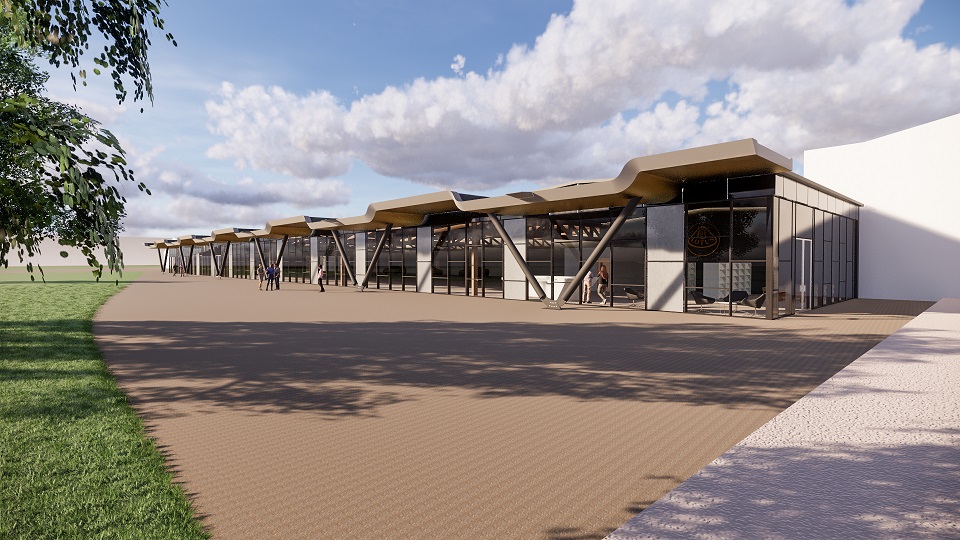
An impressive Heritage Centre and Museum will also be created, incorporating the site’s original main office and executive suites. This extensive renovation and conversion work will provide a modern space, fit to display a wide range of Lotus vehicles and exhibits. Bringing the original executive suite, including Colin Chapman’s office, to life, the Heritage Centre and Museum will allow visitors and staff to experience the history and heritage at the heart of Lotus.
-
Alongside the Heritage Centre and Museum, a modern new restaurant facility will extend forward from the existing buildings to create an impressive, and uniform façade. With views over the garden areas of the site, it will provide hospitality facilities for a wide range of activities.
The site’s existing clubhouse (the control tower of the former airbase) will be extensively renovated as part of the plans. Located near the test track, it will incorporate a new roof terrace and modern facilities for track-based activities and customer or staff events.
As well as the new buildings, the development of Hethel will see extensive enhancements and the landscaping of the site, including improvements to access, parking areas for staff and security.
(Press release from Lotus)
The New Lotus Evora GT410 Sport
Relentless in its development of world-class sports cars, Lotus has unveiled the new Evora GT410 Sport to complete the revised line-up of Hethel’s fastest model.
Launched in Lotus’ 70th year and ahead of its anniversary celebrations, the new Evora GT410 Sport takes one of Lotus’ success stories, and refines it through the application of enlightened design. Available in both 2 seat and 2+2 configurations, and in manual and automatic transmissions, the Evora GT410 Sport draws from the phenomenal Evora GT430 to provide advanced aerodynamics to an already celebrated sports car.
Combining the latest design philosophy with a car acclaimed by both critics and customers, it packs raw performance with Lotus’ latest aerodynamic developments, to provide a first-class replacement for the Evora Sport 410 model.
Employing key elements of the GT430’s sculptured body style, including specifically designed new composite front and rear body panels, but without some of the high downforce elements, the new Evora GT410 Sport enjoys a far subtler and sleeker silhouette. However, as with all Lotus sports cars, aerodynamic downforce is a requirement and this new GT-class coupe generates up to 96kg of downforce (50% more than the Evora Sport 410) making it the new benchmark when compared to similarly priced rivals.
The Evora GT410 Sport is powered by a specially calibrated and tuned higher-output version of Lotus’ supercharged, 3.5-litre 6-cylinder engine with integrated water-to-air charge cooler, producing 410 hp at 7000 rpm and 420 Nm of torque from 3500 rpm. It powers the GT410 Sport from 0-60 mph in just 3.9 seconds (automatic) and the manual version in 4.0 seconds.
The development of the new Evora GT410 Sport afforded Lotus the opportunity to optimise mass, resulting in an unladen weight of 1,297 kg and a lightest possible dry weight of 1,256 kg (including all the optional titanium exhaust, saving 10 kg, and the Lotus-tuned Öhlins TTX aluminium two-way adjustable dampers, saving 13 kg) – a total saving of 98 kg when compared to the Evora 400 benchmark, and up to 28 kg less than the already featherweight Evora Sport 410.
Launching the new Evora GT410 Sport, Jean-Marc Gales, CEO, Group Lotus plc said, “We are continually exploring new ideas, innovating and evolving our cars in pursuit of perfection. The new Evora GT410 Sport takes the lessons learnt from the development of the GT430 to deliver something outstanding and highly capable.”
Lotus Evora GT410 Sport in more detail
Lotus’ newly defined GT-class sports car captures the essence of the company’s headline model. The application of top-down evolution introduces the new front and rear aesthetic, first seen on the GT430. As a result, the car’s design combines considerable physical presence with natural aerodynamic ability.
The revised front panel features two enlarged carbon fibre ducts, with integrated air blades, to efficiently move air around the front wheels reducing turbulence and decreasing drag. Additional downforce is created by the combination of the deep front splitter and new motorsport-derived rear diffuser, mounted beneath the new style metal mesh grille which gives a cleaner finish. Sculptured carbon fibre ducts behind each rear wheel vent high pressure air as quickly as possible from the rear wheel arches, balancing downforce.
Cumulatively this all works to boost downforce to 96 kg at 190 mph, a sizable jump of 50% over the outgoing Evora Sport 410, and a massive three-times that of the Evora 400 with an improved drag coefficient. This elevates the Evora GT410 Sport to the top ranks of Lotus’ most aerodynamically efficient road cars.
As with all high-performance Evoras, carbon fibre plays a considerable role in the car’s construction. Standard carbon composite components include the front access panel, roof panel and a one-piece louvered tailgate with integrated spoiler, as well as the elements within the front air blade system and rear wheel exit ports.
This focus on the car’s critical mass delivers its headline power-to-weight ratio of 326 hp / tonne and the top speed to 190 mph (305 km/h).
Despite the car’s low mass, a range of lightweight options can be specified for the Evora GT410 Sport. This includes a titanium exhaust, cutting 10 kg from beyond the car’s rear axle.
Making the most of the traction on tap, the Evora GT410 Sport uses Michelin Pilot Sport Cup 2 tyres (235/35 R19 at the front and 285/30 R20 at the rear) with a sports suspension package of Eibach ultra-light, low-sideload springs and Bilstein sports dampers – all fitted as standard.
A touring suspension package is available as a no cost option, featuring Bilstein® non-adjustable dampers, with touring specification, and Michelin Pilot Sport 4S tyres.
For full damper adjustability, a race suspension package using Lotus-tuned lightweight Öhlins TTX aluminium two-way adjustable dampers (twenty click adjustment compression and rebound) which save 13 kg, can be specified to tune the Evora GT410 Sport to precisely suit particular road or track conditions.
Reducing un-sprung mass, ultra-lightweight, fully machined, forged aluminium wheels (19″ 8J front and 20″ 9.5J rear 10 spoke alloy wheels) are available in either silver or matt black. The option of upgrading to one inch wider (10.5J) rear wheels as used on the Evora GT430, is available and stopping power comes courtesy of AP Racing four-piston calipers front and rear with lightweight 2-piece cross-drilled and ventilated brake discs (front 370mm x 32mm, rear 350mm x 32mm).
In addition to Lotus’ slick, six-speed manual gearbox with a Torsen type limited slip differential (LSD), the Evora GT410 Sport is also available with an automatic transmission option. Slightly quicker through the gears, with a 0-60 mph time of 3.9 seconds, the six-speed automatic transmission utilises an optimised gearbox ECU for ultra-fast changes. Gear selection is made via lightweight aluminium paddles mounted to the steering wheel.
The new Evora GT410 Sport features four driver selectable ESP modes – selected via a dashboard switch. ‘Drive’, ‘Sport’, ‘Race’ and ‘Off’. Sport and Race settings increase throttle response, respectively increasing traction slip – allowing the driver a finer degree of control before intervention.
As with its Evora stablemates the Evora GT410 Sport cabin includes Lotus’ beautifully detailed carbon race seats (2+0 configuration only) and carbon door sill inserts. The steering wheel, dashboard, door panels, transmission tunnel, centre console and instrument binnacle are all trimmed in black Alcantara®, complemented by contrast twin colour stitching. Optional Sparco race seats are available in both 2+0 and 2+2 configurations with the latter requiring either the optional wider 10.5J rear wheel option, as featured on the Evora GT430, or the lightweight forged wheel option from the Evora 400, which benefits from a 9.5J rear wheel size. An integrated 7” touch-screen infotainment system with AppleCarPlay and Android Auto, Bluetooth® functionality, satellite navigation and reversing camera can also be specified.
Jean-Marc Gales concluded, “Starting 2018 in style, the Evora GT410 Sport is just the beginning of an incredibly strong year for Lotus. The core principles of Lotus and our founder Colin Chapman remain paramount as we work on the next generation of vehicles whilst building our best sports cars yet.”
Every new Lotus Evora GT410 Sport can be personalised through the increasingly popular Lotus Exclusive programme. Developed by the Lotus Design team to inspire customers, it combines traditional British craftsmanship with the best of modern design, and allows owners to tailor vehicles to their personal taste. Since its introduction last year, roughly a third of all new Lotus cars now undergo some form of customisation.
The new, fully homologated Lotus Evora GT410 Sport range can be ordered now in European and Asia Pacific markets, following in summer 2018 for the USA and China.
